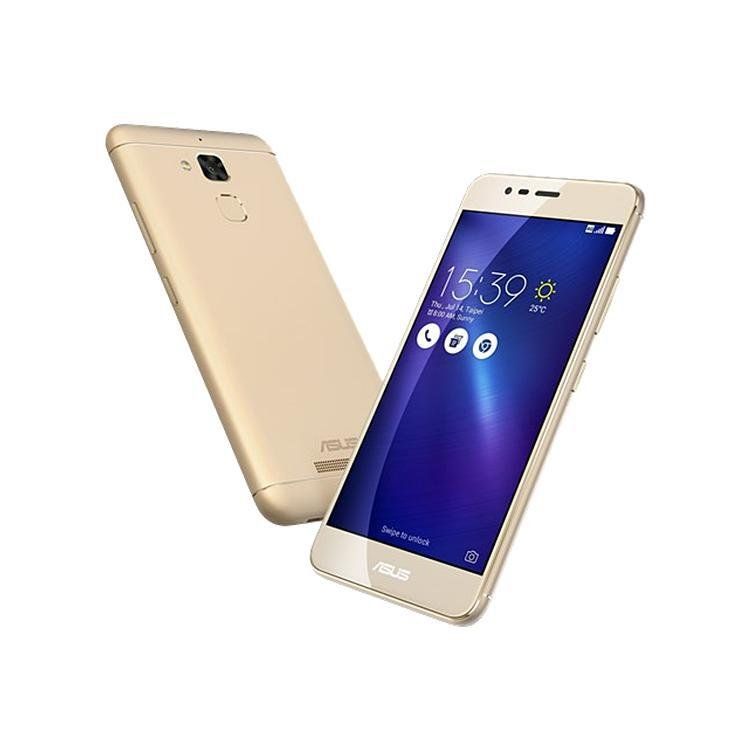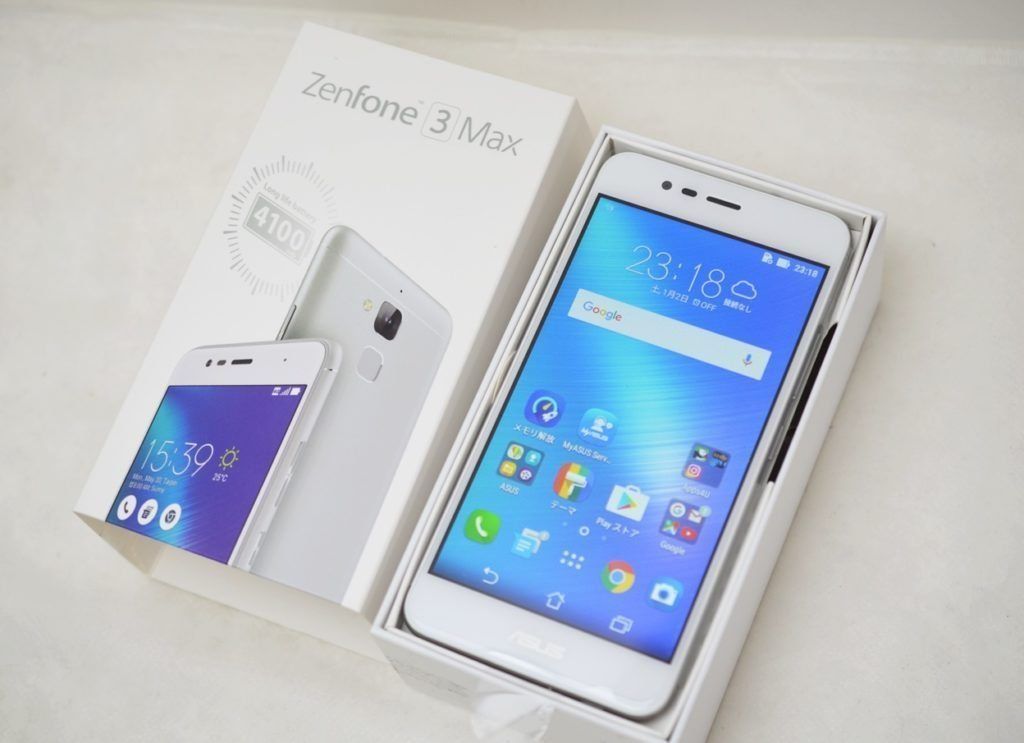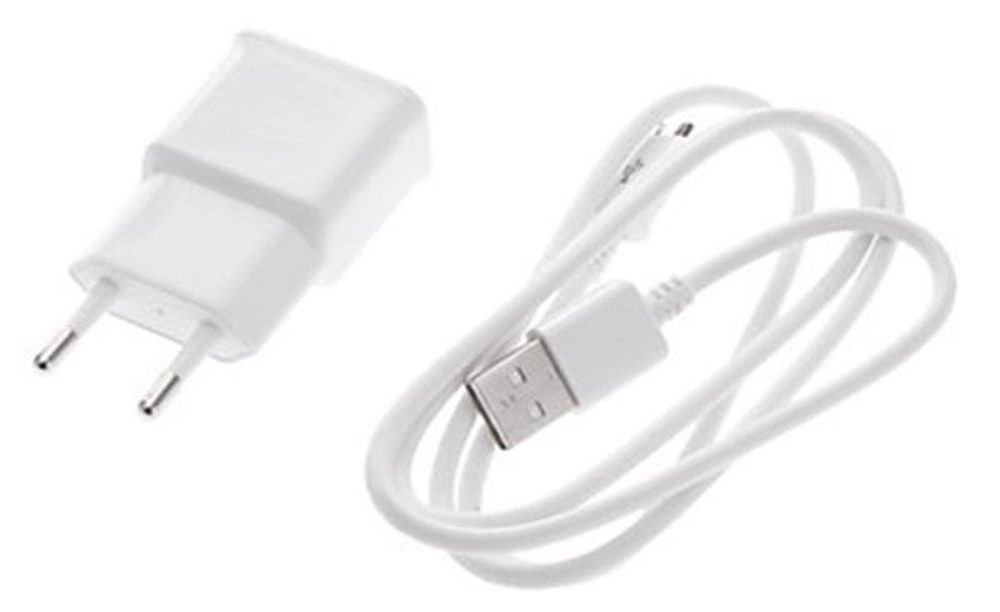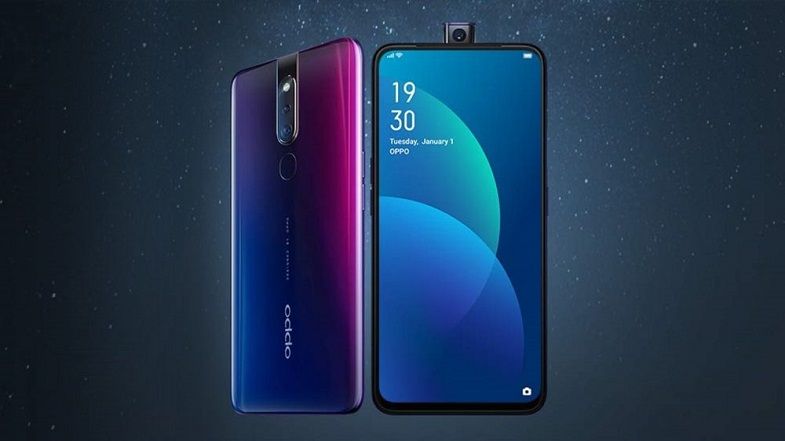Smartphone ASUS ZenFone 3 Max ZC520TL 16GB: pros and cons

ASUS ZenFone 3 Max ZC520TL 16GB fits the following selection criteria: elite appearance, low price, performance and a powerful battery. This smartphone lives without power for a long time and is resistant to workloads thanks to optimization through other characteristics. Minimalism and streamlining in design are contrasted with a large screen - a bonus to aesthetics. And metal, as the leading material, raises the status of the device in the budget segment. In general, for those who want cheap, beautiful and not to lose in anything.

Key Features ASUS ZenFone 3 Max ZC520TL
Autonomy
Let's start with the phone's ability to work without recharging, as this is the leading advantage that explains the popularity of the models.
The smartphone has a built-in 4100mAh battery, which is a lot in 2018 for a cheap line.
ASUS employees about autonomous work voiced the following figures:
- if included and not touched: 30 days.
- talk non-stop: 20 hours.
- watch HD video: 15 hours.
- surf the internet: 18 hours.

ASUS claims that the phone will last 36 hours in power saving state with 10% charge remaining. Activated through setting. Perhaps the creators and in other characteristics implied a power saving mode, because users note that the phone holds up great, but not so fantastic.
The owners provide their statistics. The results of some: 9 days does not turn off in a quiet state, and with continuous conversation or Internet surfing, the charge is enough for a full working day, even when applications are running in the background.
If you choose which company the smartphone holds better, then ASUS for such a price and functionality, if not the best manufacturers, is surely one of the top three budget segment.
Summary: High performance without power supply. But the indicators from the manufacturer and the results from the owners are different.
Equipment
The phone comes with a charger, OTG cable and a paper clip. No headphones.

- What we have:
- A charger with a 2A micro-USB cable means there is a fast charge. Cord length 90 cm.

- An OTG cable is an adapter between two phones to charge from one smartphone to another. So ASUS hints that the ZC520TL model has such a capacious battery that it is used as a portable charger.

- Pin to remove the sim card slot. Slot for two SIM cards or a SIM card and a memory card.
Summary: Pros - OTG cable, 2A charging, cons - no headphones.
Design and materials
The design is ergonomic and minimalistic - customers praise. You can't find right corners: buttons, connectors, body, all with rounded edges. The details were made in the same style, oblong and streamlined. This is how many popular models of the elite class look in 2018.
According to the materials, everything is correct. There are three colors of the device to choose from: gray, silver, gold. The back panel is a robust metal case with plastic inserts, and the front part is made of high-strength glass with an oleophobic coating.

- Of the elements:
- On the back is a fingerprint scanner, and above it is a square-framed camera and a flash. Below is a stylized speaker with the ASUS logo above it.
- Above the screen is a front camera, a message indicator, a speaker grid. Sensors: illumination, acceleration, proximity. Below the screen is the ASUS logo in the height of the frame. There are no mechanical or touch buttons.
- There are two buttons on the right edge: sound swing and power.
- At the bottom - a connector for charging microUSB.
- On the top is a 3.5 mm headphone jack.
- On the left panel there is a combined slot for a SIM card.

The slot includes two trays: the first for micro-SIM and the second for a nano-SIM or microSD-flash drive. This means that you can either do without a flash drive with two SIM cards, or limit yourself to one SIM card, but with a USB flash drive. Two SIM cards operate in a waiting order: if one number is not reached, the call is forwarded to the second.

The company is scrupulous about styling and the ZenFone's performance is a testament to it. Except that the abundance of logos scares.
Summary: The phone is ergonomic and looks expensive. The metal body and the unified design are good news, but there are two ASUS logos.
Convenience
It is worth commenting on the usability. Due to the smoothed body frames and glass, the smartphone is comfortable and natural to hold in hand. Weight 148 g - considered light.

The metal case is non-marking, but slippery. Users say it's best to wear with a case. Streamlined edges, smooth protrusion of the keys are tactilely pleasant. The response of pressing the buttons is soft.
The volume and power keys are notched to make them easier to distinguish from the case. The camera and fingerprint reader are aesthetically recessed for style consistency, touch comfort and protection from damage.
Summary: Naturally in the hand, comfortable, pleasant to the touch in general and in detail, but slippery.
Screen
The screen is evaluated according to the following characteristics - diagonal, resolution, color rendering, brightness, and material.
The display of the ZC520TL model is 5.2-inch toughened glass with streamlined edges with small bezels on the sides - 2.25 mm.
The glass is anti-reflective, non-marking and smooth due to the oleophobic coating. This coating enhances finger slip, is anti-fingerprint, scratch-resistant and easy to clean. The glass itself is durable, despite the lack of a protective film.
The limit of brightness and contrast is higher than that of analogs. The maximum brightness is 553 cd / m2, the contrast is 1187: 1. In the sun, the picture is rendered perfectly, but shaded under a strong tilt.

Users comment on auto brightness in different ways: some argue that the light change function is triggered with some delay, others are happy with the speed of the reaction. The minimum brightness does not go to full zero, keeping the richness of colors in the dark. Manufacturers have provided manual saturation control to protect the eyes.
The image is colorful and clear thanks to the resolution and matrix: the colors are juicy from any angle, the pixels are not visible due to the IPS matrix.
Specifications:
- Resolution: HD 720p
- Matrix: IPS
Such a matrix creates a high-resolution effect through enhanced contrast and color reproduction, and 720x1280 HD pixels consume less energy than 1080x1920 FullHD pixels.

The result is that the difference from FullHD is not obvious, the phone works faster and discharges more slowly. The disadvantage is that with strong slopes, the brightness drops and the color rendition is distorted.
User reviews are positive. The screen is positioned as an advantage of the device in its price category.
Summary: Full color rendition, high threshold for brightness and saturation, nice anti-reflective glass, but with strong slopes, brightness is suppressed and blacks are distorted.
Touchscreen
Multi-touch - can respond to 5 touches at the same time, supports gesture control.

Three control buttons are simulated on the desktop as on tablets: home, back, last app. They compensate for the lack of control buttons under the display. The manufacturers left the frame without a button, inserting a large ASUS logo on the bottom.

The touchscreen itself is sensitive to touch.In order not to accidentally unlock the display in your pocket, it is better to put an unlock password in the settings.
Summary: Accepts up to five touches, good response.
Performance and memory
Performance is healthy for classic use. According to users, the smartphone can confidently cope with everyday tasks, which is provided by the following components: processor, GPU, Android version, RAM and built-in memory, the possibility of additional memory and functionality.

- Parameters:
- Processor: 4 cores, 1.25GHz, MediaTek MT6737
- GPU: Mali T720
- Android: 6.0.1
- RAM: 2GB
- Internal memory: 16GB
Supports additional memory: microSD flash drive 32GB.
The characteristics are average. The processor is not capricious: it pulls surfing the Internet, working with applications in the background, the standard workload while maintaining a nimble response. Suitable for watching videos.
In case there is not enough internal memory, there is a combined slot for a flash drive, no more than 32GB. It is combined on the principle of mutual exclusion with a compartment for a second SIM card in nano format - so in addition either a SIM card or a card.
Summary: The processor copes with adequate load, it is quite productive, there are no leading versions, memory limitations.
Games and graphics
Undemanding games are played smoothly and quite pleasantly. Models are more expensive for loaded fighting games, but even with them this ASUS copes, though with lags. It is not profitable to use it for active loaded games.

The MediaTek MT6737 processor with the Mali T720 is designed for classic use: calls, Internet, video, instant messengers and applications, games of average load. Inexpensive smartphones are rarely planned for gaming, as a rule, resistance to large-scale loads is compensated by eliminating other amenities.
Summary: Draws simple games without problems, but lags on loaded ones.
Camera
The main rear camera is 13 megapixels, the front one is 5 megapixels.
The functionality of the main camera includes options such as autofocus and modes within the PixelMaster technology. The pictures are of optimum quality, as most of the good phones in the budget line take pictures. Good image sharpness and visibility.
Focusing standard: the camera selects focus based on the area of greatest contrast. Focus can be manually selected by touching the desired area. Aperture f / 2.2 - the camera transmits light well.
PixelMaster technology is all about modes. The special one is called "Super Resolution". With it, you can take a photo with a resolution of 52MP instead of the classic 13. This invention works by shooting four frames simultaneously: these images are superimposed on each other and become a photograph with a quality four times higher. There is an HDR mode. The owners note that night photography is not impressive.
The front camera has a fixed focus, you can also play with the settings.
Among the shortcomings: there is no optical stabilization and laser autofocus, while running the pictures are blurry, and in cloudy weather the pictures are less contrasting.
Summary: 13 megapixels, "Super Resolution", noticeable contrast in the light is a plus, but does not cope with night photography and shooting in motion.
Sound
The sound is standard. The voice speaker works loudly and efficiently, the voice is clear in communication. In the headphones, the volume and sound are of high quality, and the main speaker is average in strength.

In the case of the system speaker, users call the location a disadvantage. When the back of the device is placed on the table, the sound is muffled.
The possibility of not hearing the call can be compensated for by vibration, which is quite powerful in this model. The vibration intensity is adjustable in the settings.
Summary: The clarity of the voice speaker, but the poor location of the system.
Unlocking
The fingerprint scanner is important here. It is located on the back of the body right under the camera, very convenient for natural touch. The scanner accepts up to five prints: that is, you can score 5 different fingers of different hands, or you can scan one finger 5 times from all non-obvious angles so that the scanner responds to any position.Responds from 0.3 to 1 second if loaded and did not miss when touched.

The scanner is multifunctional: a swipe from top to bottom on the scanner launches the camera, a second touch takes a picture. You can receive a call by touching the scanner.
Summary: Accepts up to five prints, is multifunctional, but the recessed scanner requires a clear touch.
Interface
The proprietary ASUS interface - ZenUI 3.0 is functional, not overloaded, designed for all basic user tasks in 2018.
Two things are important in organizing your desktop: organize your application into categories and change the grid. The first grouping applications into frames of one thumbnail, thereby saving desktop space and easier to find the desired shortcut. Second, you can adjust the number of icons on the desktop. For example, for thumbnails to be large, a 3x3 grid of icons will do. Switching between workers was implemented in 9 variants.

The weather widget is installed by default: it determines the weather by geolocation, accompanying the information with graphs and details, for example, is there fog or not.

In the settings, you can adjust the gesture and touch controls. To double-click on the off screen to see the time or new notifications, just activate this setting for touch.
With the help of a mobile manager, you can monitor the phone's workload and optimize processes in time and remove system junk.
Font sizes, auto-rotate, the ability to disable auto-updates for applications - there are all the functions of a standard modern smartphone.
Summary: Complete universal interface.
Support: communication, internet and wireless technologies
Communication standards: GSM 900/1800/1900, 3G, 4G LTE, LTE-A Cat. 4 - that is, the standards required in 2018. Wi-Fi: 802.11n / b / c - the same. Bluetooth 4.0 and USB connections. No NFC - you can not count on contactless payments.
Navigation: GPS, GLONASS and A-GPS system.
From audio - FM radio. The audio file formats themselves are as follows: MP3, AAC, WAV, WMA.

Summary: Supports major standards, but no contactless payments.
How to choose where it is profitable to buy and how much it costs
When deciding to buy ZenFone 3 MAX, you need to know that there is a whole line of such zenphones and there is a model very similar in the name - ZenFone 3 Max ZC520KL. The one-letter difference in the model name defines the absolute difference in functionality and detail. Which one is best to buy depends on your needs and budget. The ZC520KL smartphone is newer, therefore more expensive and more powerful in performance.

The ZC520TL variant is rarely found in official stores, in some you can even see the initial price of 11,990 rubles. It is easy to find on the Internet cheaper than 11 thousand rubles. The average price in Russia is 9 472 rubles, and in Kazakhstan, for example, for 32 GB - 59 786 tenge.
Summary: Available at a low price, rarely in stock.
- stylish design and streamlining;
- metal case;
- nice interface;
- fingerprint recognition;
- performance.
- memory limitation;
- impossibility of contactless payments;
- speaker location;
- slippery body.
Despite the fact that the ZC520ТL on the market has pushed new items, it is still a functional and stylish phone at a low price, with a powerful battery. Can be ranked in the 2018 quality smartphones rating in the budget category.
new entries
Categories
Useful
Popular articles
-

Top rating of the best and inexpensive scooters up to 50 cubic meters in 2024
Views: 97661 -

Rating of the best materials for noise insulation for an apartment in 2024
Views: 95022 -

Rating of cheap analogues of expensive drugs for flu and colds for 2024
Views: 91751 -

The best men's running shoes in 2024
Views: 87681 -

Top ranking of the best smartwatches 2024 - price-quality
Views: 85092 -

Best Complex Vitamins in 2024
Views: 84801 -

The best dye for gray hair - 2024 top ranking
Views: 82406 -

Rating of the best wood paints for interior use in 2024
Views: 77202 -

Ranking of the best action cameras from China in 2024
Views: 75269 -

Rating of the best spinning reels in 2024
Views: 74827 -

The most effective calcium supplements for adults and children in 2024
Views: 72463 -

Top rating of the best means for male potency in 2024 with a description
Views: 68296









